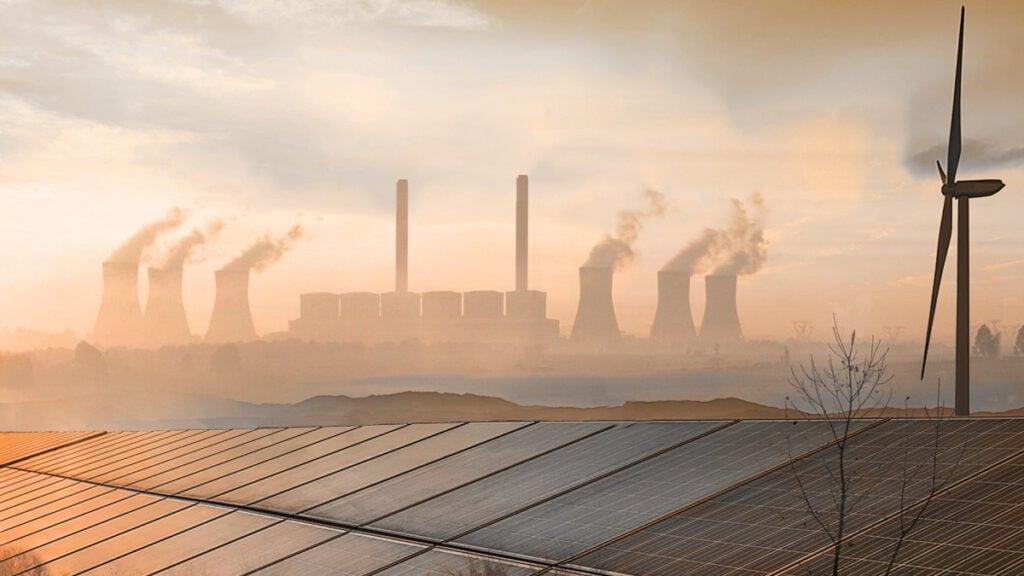Africa-Press – Rwanda. The real reason why load shedding appears to be over for now is sub-optimal demand, as households and companies invest heavily in alternatives to Eskom.
This has been coupled with poor economic growth, which limits increases in demand for electricity and, thus, keeps load shedding at bay.
For load shedding to be permanently ended, even when economic growth picks up, South Africa’s generation capacity needs to increase rapidly.
This is feedback from Nedbank’s Corporate and Investment Banking (CIB) division, which outlined trends in South Africa’s electricity sector in its latest Energy Prospects report.
Compiled alongside African Energy, the report analyses the health of South Africa’s electricity sector and what is needed to enhance energy security in the future.
Nedbank explained that the worst of South Africa’s electricity supply crisis may now be over, but enormous challenges remain.
Crucially, the structural and commercial changes that the crisis necessitated now have a momentum of their own, with increased private sector participation becoming unstoppable.
All the evidence suggests that the decisive shifts that have already occurred will be followed by further reform and the creation of an open, competitive electricity market.
So far, Nedbank said this reform has resulted in substantially lower demand for electricity from Eskom, helping to keep load-shedding at bay.
Coupled with improvements at Eskom’s coal-fired power plants, this translated into a slender excess of supply, resulting in load-shedding in the second and third quarters of 2024.
Eskom’s energy availability factor (EAF) improved to 60% throughout 2024, a level last experienced in 2021. This was still well below previous years and the 75% targeted in the Integrated Resource Plan (IRP).
Importantly, due to the pressure on the grid, demand has remained below its 2019-2021 average, despite a recent increase.
This is because so many businesses and households have shifted to self-generated solar in response to the power crisis, to some extent. It is, therefore, a permanent reduction, Nedbank said.
The graph below illustrates the transformation in South Africa’s energy supply, with solar and wind energy growing from negligible amounts a decade ago to become major contributors.
No margin for error
Despite Eskom’s improved performance and the permanent reduction in demand, South Africa is not out of the woods.
Eskom’s electricity supply remains unstable due to constrained capacity, with excess demand being managed through load reductions, imports, and the use of expensive open-cycle gas turbines (OCGTs).
Nedbank stated that the lack of grid capacity, particularly in the Cape provinces, poses a threat to the integration of new projects that could secure South Africa’s energy future.
This challenge is compounded by Eskom having to decommission several of its coal-fired power plants in the coming decade as they reach the end of their design life.
As a result, South Africa is at a critical juncture in its long-term energy security journey. Despite improvements, there is a looming crisis of demand significantly outstripping supply for a prolonged period.
Despite the increased investment in new generation capacity and planned investments, it is unlikely to be enough for South Africa’s future needs.
Demand still outstrips supply by a significant margin in South Africa during peak hours and is expected to increase further as the population grows and economic activity expands.
Currently, economic growth is still limited by the country’s insufficient electricity supply, with any pickup in activity being capped by an energy shortage.
New capacity is needed from various forms, including renewables, gas, storage, and potentially nuclear in the long run.
African Energy’s research estimated that there is an exploitable market in residential, commercial, and industrial rooftop solar of about 10 GW that could be unlocked by 2030.
This needs to be coupled with investment in other sources of energy, such as gas and nuclear, that can fill in gaps in supply from renewable sources.
The evidence of continued energy insecurity is shown by the ongoing reliance on the compensatory load and very high levels of unplanned outages.
The achievement of a stable electricity supply requires a sustained improvement in generation capacity, particularly in renewable energy and less dependence on the compensatory load, Nedbank said.
For More News And Analysis About Rwanda Follow Africa-Press






